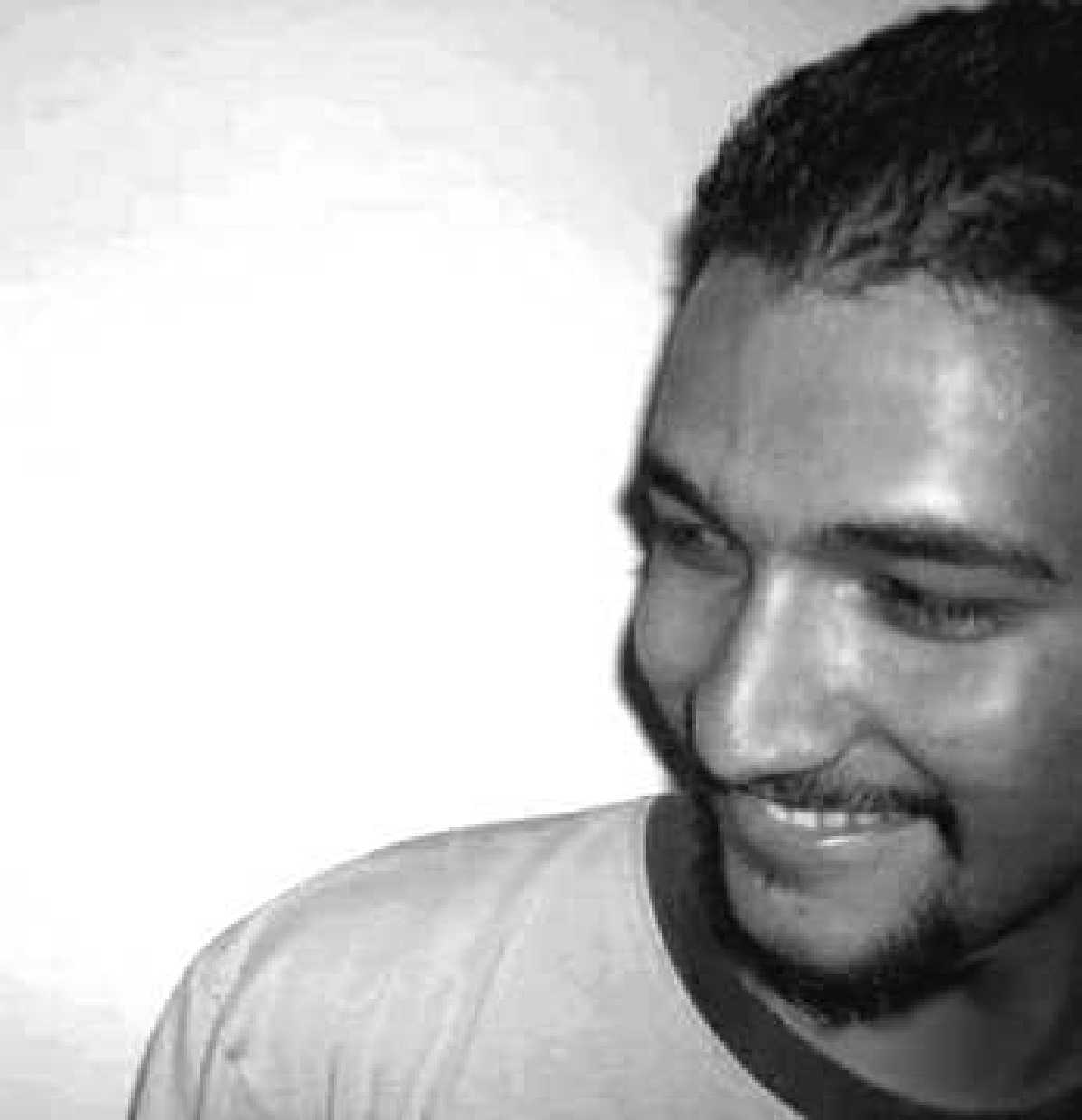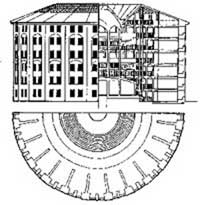 Rope-Walking Audience Rope-Walking Audience
In the 18th century, the philosopher Jeremy Bentham, designed a prison building, the
Panopticon, which had "at the periphery, an annular building; at the centre, a
tower." The architecture attempts to make the captives unable to see the guardian in
the tower or whether it was empty or not. According to Foucault, the Panopticon is a
compelling design because it "reverses the principle of the dungeon" and
"visibility is a trap" for the surveyed.(1)
Imprisonment and exclusion always go hand in hand with the expectation of normalization
("you will be excluded/imprisoned unless you become of us") and surveillance is
expected to force any kind of excluded group to become normalized: prisoners, children,
madmen, and the sick. Thus we can draw a strong parallel between exclusion and
surveillance.
Excluding the unusual was a default right of the ordinary man in the past centuries. An ordinary farmer
was no object of surveillance. Even the ruler couldn't survey the farmers -he had no means
to do that. On the contrary, the ordinary farmers were the ones who could watch their
animals in the farm, the rulers in the public square and the acrobats in the circus.
Anybody who wasn't one of them would be surveyed one way or another even when they didn't
have control over him/her. An ordinary farmer
was no object of surveillance. Even the ruler couldn't survey the farmers -he had no means
to do that. On the contrary, the ordinary farmers were the ones who could watch their
animals in the farm, the rulers in the public square and the acrobats in the circus.
Anybody who wasn't one of them would be surveyed one way or another even when they didn't
have control over him/her.
The key point here is the clear distinction between "us" (the subject of the
surveillance) and "them" (the object). It lets you know what is normal, and what
is not. If one is under surveillance, he/she is abnormal. A witch at the stake, an acrobat
in the circus, a 2.5-meter long man in a freak show, and a ruler in the public square:
they are all others, and this helps you to differentiate yourself from them. This allows
you to say, "I'm neither a ruler nor a witch. I can't walk on the rope and I'm not as
tall as that man, but I'm not alone. We're a huge audience, and we are the majority."
Now
Let's return to our century.
Since the creation of indirect ways of surveillance, the understanding of audience has
become distorted. Once the audience can be surveyed, the principle of surveillance is
inversed. Once you have statistics, security cameras and a MOBESE system; you put the
audience in the middle of the circus, and watch them: their comfort is shaken. From that
point on, the "normal" majority loses their ability to isolate the others from
themselves.
The others watch everyone. And this means that you cannot define yourself based on the
others anymore. You're not a perfect subject of the surveillance web. You are also the
object/the other. Though you're a part of an audience, another also watches you. And this
confuses the process of creating the self via the exclusion of others.
Maybe this is why national and religious exclusion has become so popular: in an
environment where the audience is full of ropewalkers, and the people are deprived of
knowing who should be excluded, the easiest thing is to label people based on their
origin. But will this help you to hide the fact that you don't have a real other? I'm
wondering how long people can hide behind such a game while they're deprived of possessing
a real self.
(1) Foucault, Michel. "Discipline and Punish: The Birth of the Prison."
Trans. Alan Sheridan. New York: Vintage Books, May 1995.
İsmail O. Postalcıoğlu (POLS/IV)
ismail_orhan@yahoo.com
 |







